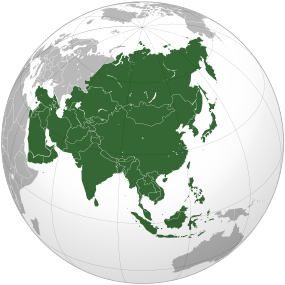Towards A Region-Wide FTA In Asia: Whither The Trilateral FTA? – Analysis
By RSIS
The China/Japan/South Korea FTA which is under negotiation will lend support to the ASEAN-led pathway to a region-wide FTA in Asia. Will it be complementary or competitive to the US-led TPP? The Trilateral Summit Leaders should follow through with bold actions to conclude the negotiations expeditiously.
By Pradumna B Rana
The Trilateral Summit last month announced that negotiations would begin later this year on a China/Japan/South Korea FTA or the C/J/K FTA. This suggests that two pathways to a region-wide FTA are starting to evolve in Asia. One is the ASEAN-led East Asian FTA and the Comprehensive Economic Partnership for East Asia (CEPEA). The alternative pathway is the US-led Trans-Pacific Partnership, which is already under negotiation.

In the past two decades the world has witnessed a proliferation of free trade agreements (FTAs), with Asia in the forefront. The number of FTAs signed by Asian countries increased from 3 in 2000 to 71 in 2012. Of these, 62 FTAs are in effect. This proliferation has occurred mainly because multilateral negotiations under the Doha Development Round have stalled. Although recent research results are more sanguine, proliferation of FTAs lead to the so-called “noodle bowl” effect which refers to the increased administrative and transaction costs due to multiple rules of origin.
One way of reducing the “noodle bowl” effect of FTAs and making them stepping stones, rather than stumbling blocks, to multilateralism is to broaden their membership and to deepen their coverage beyond tariffs to areas such as promotion of investment and technology cooperation. Region-wide FTAs are less trade diverting and more trade creating than bilateral ones. Consolidation of FTAs is, therefore, in order.
Two Pathways
The ASEAN-led pathway begins with the ASEAN FTA which has been in place since 1992, combining it with the ASEAN+1 FTAs with China, Japan, Korea, India, Australia, and New Zealand, and then consolidating these with the trilateral C/J/K FTA. The resulting East Asian FTA could then be expanded to cover all of the ASEAN+6 and become the CEPEA. This sequential approach to trade integration reflects Asia’s pragmatic bottom-up approach to integration that supports sub-regional cooperation as the building blocks of an eventual broader, deeper and more unified regional architecture.
The alternative pathway, the US-led Trans-Pacific Partnership (TPP), is also gaining currency. In addition to the nine countries in three continents – Australia, Brunei, Chile, Malaysia, New Zealand, Peru, Singapore, United States, and Vietnam, at the APEC Summit in Honolulu in November 2011, three more countries – Japan, Canada, and Mexico – expressed their interest in joining the negotiations as well. The 12th round of negotiations just concluded in Dallas, Texas, and the target is to try to wrap it up by the year end. A key element of the Obama Administration’s commitment to make US engagement in the Asia-Pacific a top priority, the TPP focuses on a deep “high quality, 21st century” FTA which covers not only trade in goods and services, but also intellectual property rights, government procurement, labour standards, environmental regulations, and small and medium enterprises. It seeks to eventually achieve the APEC’s stalled Free Trade of the Asia-Pacific (FTAAP).
Complementary or Competitive?
Are the two pathways to region-wide FTA in Asia, complementary or competitive? Japanese Prime Minister Noda has been quoted as saying: “We will promote the TPP and the trilateral FTA in parallel. These efforts can be mutually reinforcing to each other”. Others have a different take. An eminent trade economist from Columbia University, Professor Jagdish Bhagwati, has argued that one of the major reasons for the stalled efforts to promote the Free Trade of the Americas between North America and South America was the insistence by the US that high doses of non-trade related issues including labor standards be included in the talks. Brazil’s former President Luiz Lula Inacio de Silva, flatly rejected the inclusion of labour standards in trade. The US efforts, therefore, led to the division of South America into two blocks.
The C/J/K FTA
When the Leaders of China, Japan, and Korea announced on 13 May 2012 that they had agreed to begin negotiations on the C/J/K FTA later this year, they also announced a complementary agreement on a three-way investment treaty. Although the C/J/K FTA had been on the drawing board for some time, progress had not been made in the past as the three North-eastern neighbours are divided by political distrust, protectionist interests, and divergent investment policies, as well as by regional worries about China’s expanding economic and military power. Why the sudden change?
The Leaders described their steps as a means to not only boost trade but also to cement East Asian regionalism and build political trust among each other. All three countries are major global exporters and together they account for nearly 20% of world GDP. The Xinhua news agency reported recently that the C/J/K FTA could lift China’s GDP by up to 2.9%, Japan’s by 0.5%, and Korea’s by 3.1%.
Still many hurdles remain for the successful negotiation of the C/J/K FTA. In addition to those mentioned above, China is unlikely to make concessions that would threaten the state’s ability to control what it perceives as strategic industries, and agriculture producers in Japan and Korea have the political clout to defend the extensive trade barriers that benefit them.
If the intent of the Leaders’ announcement last month was to show support to the ASEAN-led pathway to a region-wide FTA in Asia – in view of the perceived threats from the US-led pathway – they should overcome the political and other obstacles and conclude the negotiations as expeditiously as possible. At the end of the day that is what matters and not expressions of interest to begin negotiations.
Pradumna B. Rana is Associate Professor in International Political Economy at the S. Rajaratnam School of International Studies (RSIS), Nanyang Technological University and coordinator of economic multilateralism and regionalism studies at the RSIS’ Centre for Multilateralism Studies.
